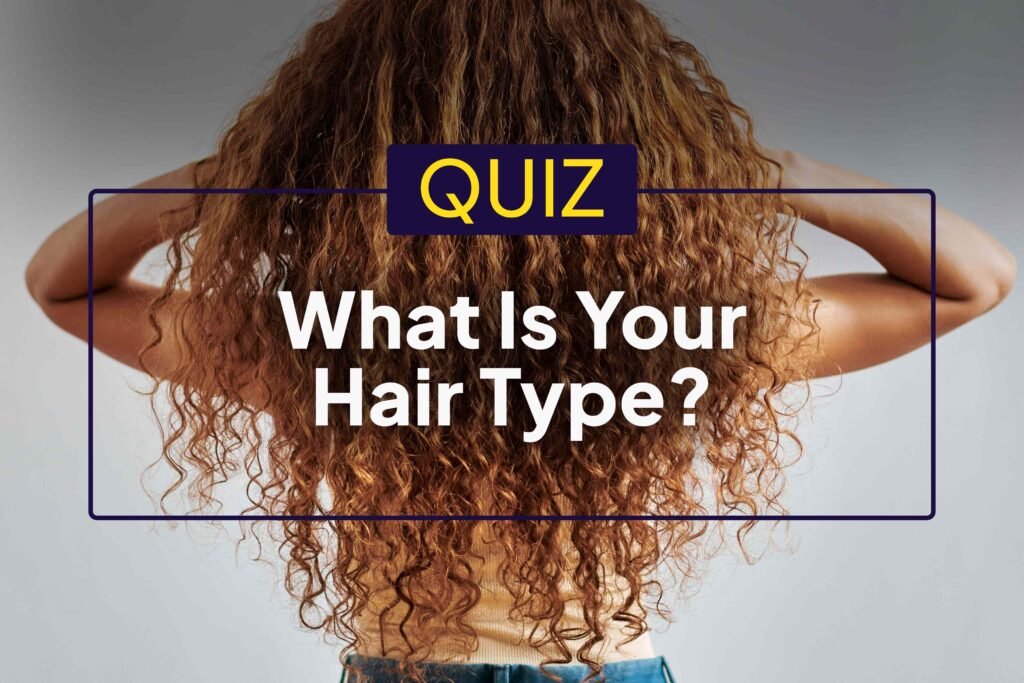Hair type refers to the natural pattern and texture of your hair. Many people classify hair based on a modified version of the Andre Walker Hair Typing System, developed in the 1990s by Oprah Winfrey’s hairstylist. This system groups hair into 12 main types, ranging from straight to coily patterns and fine to coarse textures.
Understanding your hair type can help you identify its distinct characteristics and needs. Take this quiz to see which of the 12 hair types you might have, based on your hair’s pattern and texture.
Hair is commonly typed based on two main criteria: pattern and texture.
Note: Your hair may not fit neatly into one of these categories. You may have a combination of different hair types on your head. Your hair can also change over time and may be influenced by factors like genetics, hormones, medication, exposure to chemicals, and aging.
Hair Pattern
Pattern refers to the natural shape of your hair.
There are four main pattern categories:
- Type 1 (straight): The hair fibers form a straight line. Straight hair tends to have more shine than other types because it lies flat, allowing oils to travel down the hair shaft. This also makes it more prone to oil buildup.
- Type 2 (wavy): The hair fibers form the shape of an “S.” Oil is often more balanced with this hair type. Wavy hair is also more prone to frizz than straight hair.
- Type 3 (curly): The hair forms the shape of a curl or corkscrew. Curly hair is often drier than types 1 and 2 because oils cannot travel as easily down a curly hair shaft. It is also more susceptible to frizz.
- Type 4 (coily): Hairs form defined coils, either in a tight corkscrew or a “Z” or zig-zag shape. The hair strands are often thinner and more fragile than other hair types, making them more prone to breakage.
Hair Texture
Texture refers to the thickness or diameter of individual hair strands.
There are three main hair texture options:
- A (fine): Strands are thin and soft to the touch. Your hair may feel silky.
- B (medium): Strands are a bit thicker in diameter than type A. Your hair may feel like cotton.
- C (coarse): Strands are wider in diameter. Your hair may feel rigid, wiry, or fibrous.
Note: Some people use texture to describe the tightness of a curl pattern rather than strand thickness, with “A” designating looser curls and “C” representing tighter curls.
The number represents your hair pattern, and the letter represents your hair texture.
Design by Health; Getty Images
The 12 hair types are named based on the two main criteria, pattern and texture. Your hair is given a number (1-4) for its corresponding pattern, followed by a letter (A, B, or C) for its corresponding texture:
- 1A: Straight, fine, flat, and fragile strands. The hair appears shiny.
- 1B: Straight hair with medium texture and more body than 1A.
- 1C: Coarse, straight hair with more volume than other “1” types. This type is the most resistant to heat styling and may be less likely to hold a curl.
- 2A: Fine, thin, loose waves that can be easily straightened or curled.
- 2B: Waves with more definition and body. The wave pattern may follow the shape of your head.
- 2C: Thicker, coarser, tighter waves that can be confused with curls. This type can frizz easily.
- 3A: Shiny, loose, but defined curls. The hair is finer than types B and C.
- 3B: Curls form tighter ringlets and spirals. This type typically has more volume than 3A.
- 3C: Corkscrew curls that are more prone to dryness.
- 4A: Dense and springy coils that may form an “S” pattern when stretched.
- 4B: Coils form a Z shape, with sharper angles than 4A.
- 4C: Zigzags are tighter, springier, and often more fragile. The hair may appear less defined due to its density.
Here’s an easy-to-read breakdown of the 12 hair types:
A – Fine
B – Medium
C – Coarse
1 – Straight
1A
1B
1C
2 – Wavy
2A
2B
2C
3 – Curly
3A
3B
3C
4 – Coily
4A
4B
4C
While the hair typing system is not perfect, it can serve as a useful starting point if you want to learn how to care for your hair based on its individual needs.
Understanding your hair type may help you discover which products, styling techniques, and treatments work best for you.
For example, coily hair is more prone to breakage and may benefit from strengthening products or protective styles, such as braids or twists. Straight hair can become oily, so it may help to focus on avoiding oil buildup. Dry, curly hair might benefit from hydrating products, while those with wavy hair may consider methods designed to enhance their waves while reducing frizz.
Health.com uses only high-quality sources, including peer-reviewed studies, to support the facts within our articles. Read our editorial process to learn more about how we fact-check and keep our content accurate, reliable, and trustworthy.
Oladele DB, Markiewicz E, Idowu OC. The genomic variation in textured hair: Implications in developing a holistic hair care routine. Cosmetics. 2024;11(6):183. doi:10.3390/cosmetics11060183
Gaines MK, Page IY, Miller NA, et al. Reimagining hair science: A new approach to classify curly hair phenotypes via new quantitative geometric and structural mechanical parameters. Acc Chem Res. 2023;56(11):1330-1339. doi:10.26434/chemrxiv-2022-35bt7
Moody SN, Dammen L van, Wang W, et al. Impact of hair type, hair sample weight, external hair exposures, and race on cumulative hair cortisol. Psychoneuroendocrinology. 2022;142:105805. doi:10.1016/j.psyneuen.2022.105805
Kymberlee H, Adesola A, & Prajjwhal D (2018). Towards creation of a curl pattern recognition system. Proceedings of the International Conference on Image Processing, Computer Vision, and Pattern Recognition (IPCV), 30–33.
MedlinePlus. Is hair texture determined by genetics?.
Avenue Five Institute. The cosmetology student’s guide to treating different hair types & textures.

